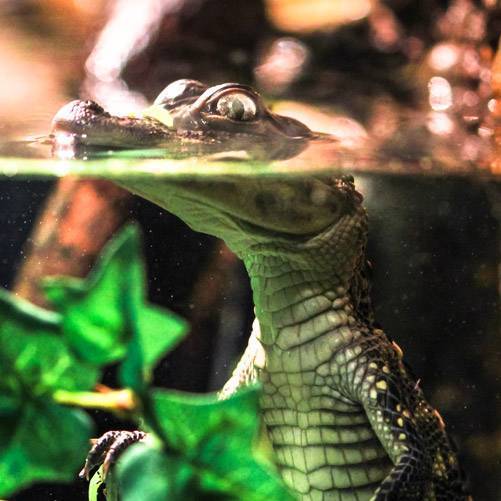Moray eels belong to the family Muraenidae and there are about 200 known species. They live mainly in warm and temperate seas. They resemble snakes with their long slender body structure. This allows them to move easily in narrow spaces on rocky shores and coral reefs.
Physical Structure of Morays
Their scaleless skin is covered with a slippery mucous membrane. The dorsal fins of moray eels extend to the tail and are usually attached to their body. Pectoral and ventral fins are absent. Colors and patterns vary greatly between species. Zebra Moray Eels are named after their coloration and have black and white striped patterns. Snowflake Moray eels have black or brown spots on a white background. The Mediterranean Moray has brown or gray tones with distinctive spots on its body.
Their mouths are quite large and they can swallow their prey whole. They have sharp curved teeth, some of which are curved into the mouth, preventing the prey from escaping. With their powerful jaws, they can easily tear their prey apart.
Their eyesight is limited due to their small eyes. However, their sense of smell and touch are very well developed.
Their size varies between 1-2 meters. The largest species is the Giant Moray eel, which grows up to 3 meters. Zebra Moray eels are around 1.5 meters and Snowflake Moray eels are around 1 meter. They are very flexible during swimming with their thin long tails.
The Most Interesting Features of Moray Eels
Moray eels can knot their bodies to tear their prey apart. This behavior is especially common when consuming large prey. Moray eels have a second jaw in their throats that helps them catch their prey. This jaw pushes the prey from the mouth to the stomach.
Where Moray eels live
Moray eels can be seen in Mediterranean countries, the Red Sea, the Indo-Pacific Ocean, the Atlantic Ocean, and the coasts of Africa. It is also possible to see moray eels in Turkey. It can be seen in the Aegean and Mediterranean Coasts such as Kaş, Bodrum, Fethiye, Datça.
What do moray eels eat?
Moray eels are carnivores and feed on a wide variety of foods. Their main food sources are the following:
- Small fish
- Crustaceans (such as crab, shrimp)
- Cephalopods (such as octopus, squid)
- Occasional sea snakes and other moray eels
Morays use their sharp teeth and powerful jaws to catch their prey. They are also famous for using their bodies in knots to tear their prey apart.
How do moray eels reproduce?
The reproduction process of moray eels is quite interesting. These fish reproduce by spawning. Female moray eels lay thousands of eggs in the water, which are then fertilized by males. The hatched larvae live a planktonic life and develop over time into adult moray eels. During their breeding period, moray eels can exhibit a more aggressive and protective behavior. Therefore, divers are advised to be careful during this period.
Frequently Asked Questions About Moray eels
1. Is Moray Eel Poisonous?
Some species of moray eels can be poisonous, but this poison is usually not fatal to humans. Bacteria found in the mouths of moray eels can cause infection after a bite. It is therefore important to avoid contact with moray eels. Poisonous species usually live in tropical areas.
2. Will Moray Eels Attack Humans?
Moray eels do not usually attack humans, but they can bite in defense when they feel threatened. Especially when diving, it is important not to interfere with the habitat of moray eels and not to disturb them. Moray eels are creatures that generally prefer to hide.
3. What are Moray Eel Species?
There are about 200 different species of moray eels. The most well-known species are the following:
- Zebra Moray (Gymnomuraena zebra): Known for its black-and-white striped patterns.
- Snowflake Moray (Echidna nebulosa): It has black or brown spots on a white background.
- Green Moray (Gymnothorax funebris): It stands out with its greenish colored skin.
- Mediterranean Moray eel (Muraena helena): Found in the Mediterranean and Aegean Seas.
- Giant Moray (Gymnothorax javanicus): Up to 3 meters in length, it is one of the largest moray species.
4. What are the Differences Between Zebra Moray and Snowflake Moray?
Zebra moray eels and snowflake moray eels are distinguished by their colors and patterns:
- Zebra Myrtle:
- Black and white striped pattern.
- It feeds on crustaceans.
- It has a less aggressive structure.
- Snowflake Myrrh:
- Black or brown spots on a white background.
- It feeds on small fish and crustaceans.
- It is smaller in size (usually around 1 meter).
5. How do moray eels reproduce?
Moray eels reproduce by spawning. Female moray eels lay thousands of eggs in the water, which are fertilized by males. The hatched larvae live a planktonic life and develop over time into adult moray eels. During the breeding season, moray eels can be more protective and aggressive.
6. Can Moray eels be kept in an aquarium?
Moray eels can be kept in an aquarium, but this is a very challenging process. For this reason, it is very important that they are cared for by trained and experienced people. Things to consider for keeping moray eels in an aquarium:
- Large Aquarium Morays need large living spaces.
- Proper Nutrition: Live or frozen fish, shrimp and squid should be fed.
- Safety Morays can harm other fish in the aquarium. Therefore, they should be kept together with suitable species.
- Water Quality: Morays need clean and well-filtered water.
7. How Long Do Moray Eels Live?
Their average lifespan is 15 years. The oldest is 38 years old.
8. How much do moray eels weigh?
The average is 5 kg. However, large species such as giant moray eels can exceed 30 kg.
At Emaar Aquarium, you can see Zebra Moray eels and Snowflake Moray eels live and witness the amazing features of these wonderful fish up close.




